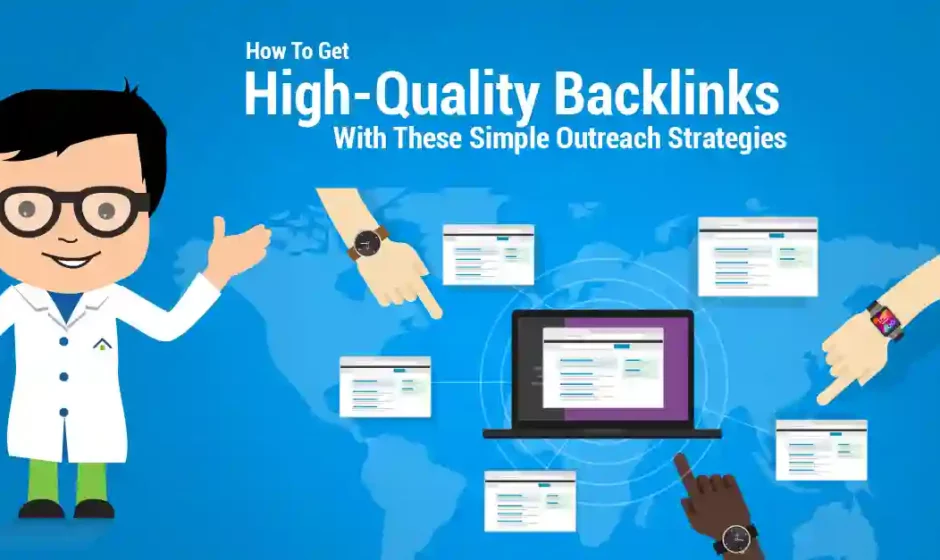In the intricate world of search engine optimization (SEO), maintaining a clean and high-quality backlink profile is essential for sustained success. However, navigating the challenges of backlink audits and cleanup can be a complex undertaking. In this article, we will explore the importance of backlink audits, the common challenges associated with them, and effective strategies for navigating the process to ensure a healthy and reputable online presence.
The Importance of Backlink Audits:
A backlink audit involves a comprehensive analysis of the links pointing to a website to assess their quality, relevance, and potential impact on SEO. This process is crucial for several reasons:
- Algorithmic Changes: Search engine algorithms continually evolve, and what may have been acceptable in the past might be penalized today. Regular backlink audits help ensure compliance with current search engine guidelines.
- Penalty Prevention: Low-quality or spammy backlinks can lead to penalties from search engines. Identifying and removing such links through audits is a proactive measure to prevent potential penalties and maintain a positive online reputation.
- Maintaining Relevance: Websites naturally evolve, and so do their content and focus. A backlink audit ensures that the links pointing to a site remain relevant and contribute positively to its thematic authority.
Challenges in Backlink Audits and Cleanup:
- Volume of Backlinks: For established websites, the sheer volume of backlinks can be overwhelming. Analyzing each link individually is time-consuming, and it can be challenging to prioritize the most critical links that require attention.
- Distinguishing Quality from Quantity: Identifying which backlinks are low-quality or potentially harmful requires a nuanced understanding of SEO. Distinguishing between links that positively contribute to a website’s authority and those that may harm it is a common challenge.
- Unnatural Link Patterns: Detecting unnatural link patterns, such as excessive exact-match anchor texts or links from irrelevant sources, requires careful scrutiny. These patterns can be indicative of manipulative link-building practices that may trigger search engine penalties.
- Outdated Information: The internet is dynamic, and websites frequently update their content. Backlink audits may uncover outdated information, including links to pages that no longer exist. Cleaning up these outdated links is crucial for maintaining a positive user experience.
Strategies for Navigating Backlink Audits and Cleanup:
- Utilize SEO Tools: Leverage reputable SEO tools like Ahrefs, Moz, or SEMrush to streamline the backlink auditing process. These tools provide insights into the health of your backlink profile, including metrics like domain authority, anchor text distribution, and link types.
- Prioritize High-Impact Links: Given the potential volume of backlinks, prioritize the audit by focusing on high-impact links first. Identify links from authoritative domains, as well as those with potentially harmful signals. Addressing these links can have a more immediate impact on your website’s SEO.
- Distinguish Toxic from Harmless Links: Develop a keen eye for distinguishing between toxic and harmless links. Consider factors such as the relevance of the linking domain, the context of the link, and the diversity of anchor texts. This discernment is crucial for effective cleanup without impacting positive link equity.
- Engage in Link Outreach: For backlinks that are deemed harmful but are difficult to remove directly, engage in link outreach. Reach out to the webmasters of linking domains, explaining the situation and politely requesting the removal of the link. Establishing a proactive and transparent communication channel can enhance the success of outreach efforts.
- Disavow Low-Quality Links: Google’s Disavow Tool allows webmasters to disassociate their websites from specific low-quality or harmful backlinks. Use this tool judiciously after careful consideration and attempt to remove links through outreach first. The Disavow Tool should be a last resort for links that cannot be removed manually.
- Regular Monitoring and Maintenance: Backlink audits are not a one-time task; they require regular monitoring and maintenance. Set up recurring audits to stay ahead of potential issues, especially in dynamic industries where link profiles can change rapidly.
- Educate Stakeholders: If you’re working in collaboration with a team or external partners, ensure that stakeholders are educated about the importance of maintaining a clean backlink profile. Foster a shared understanding of best practices to prevent future issues.
- Stay Informed about SEO Trends: SEO is a dynamic field, and staying informed about emerging trends and algorithm updates is crucial. Regularly update your knowledge to adapt your backlink strategy in line with industry best practices and search engine guidelines.
Conclusion:
Navigating the challenges of backlink audits and cleanup is an integral part of maintaining a healthy and high-performing website in the digital landscape. By understanding the importance of backlink audits, being aware of common challenges, and implementing effective strategies, webmasters and SEO professionals can ensure that their websites not only comply with search engine guidelines but also thrive in the competitive online environment. Regular vigilance, strategic decision-making, and a commitment to quality are key elements in the ongoing process of managing and optimizing a website’s backlink profile.



